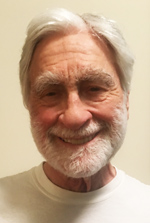
LA JOLLA, California — Consider that a new biologic compound for treatment of Crohn’s Disease achieves a complete remission rate of 50% after one year, while placebo treatment achieves 25%. Though statistically the active drug treatment is significantly better than the placebo, we are still left with 50% who did not respond well. What’s to be done?
Dr. Shai Shen-Orr, an immunologist professor at the Technion, works on this problem using state of the art Artificial Intelligence (AI). Sponsored by the local chapter of the American Technion Society, he lectured to local supporters at the La Jolla Institute for Immunology Wednesday, Sept. 18.
He is onto discovering techniques for studying finer points of human immunological function. Considering the existence of widespread data on the human immune system, most of it not easily connected, this is an enormous task for a human mind.
But with Super Computers and applied AI, it is possible to begin to sort the data and find patterns which give us direction into how to treat those yet untreatable.
To give an example, he proposed a classical lab test, the complete blood count. In the differential of the white cells, those called lymphocytes are a major key to functions of the immune system. Though under a lab microscope, lymphocytes all look the same, we now know they comprise over 100 subspecies with functions of many yet to be discovered. Today, a single tube of one’s blood can be theoretically tested for greater than 100,000 measurements!
With today’s tools, even lacking much of the inherent information of each subspecies of lymphocytes, he has been able to compose what he calls “a comprehensive system of immunity.” This has come a long way toward solution to his starting problem of “No good Metrics of Immune Health.”
Immune Age is a complex concept, with work still in progress. At the start was the common observation that immune responses, e.g. to vaccines and to cancers, decline with age. Aging studies demonstrate, among other things: (1) epigenetic changes in chromosomes, (2) alteration in metabolic status in immune cells, and (3) inflammation.[1] These result in dysregulation in B and T lymphocytes, plus other non-immune cells such as Natural Killer (NK) cells.
Overall, aging is associated with decreased naive T cells. Also, what has emerged is that immune-aging is associated with a higher rise of provoked naive CD4 cells ahead of naive CD8 cells, along with reductions in various cytokines responsiveness. [2][3]
Generally an elderly person in the US can be said to have a high Immune Age. If ultimately it is manipulated downward, one can reduce him/her to a younger immune age status, as seems to be the case among elders in Palo Alto. So far exercise has been found to correlate with reduction of Immune Age, as has some fasting diets.
There remain numerous gaps in this area of knowledge, toward which infusions of money will help resolve. Professor Shen-Orr accordingly has formed his own company, CytoReason, which welcomes donor money for research.
Dr. Shen-Orr is technically a Systems Biologist and Data Scientist in the Faculty of Medicine at the Technion in Haifa, Israel, where he directs the Laboratory of Systems Immunology and Precision Medicine.
For opportunities to visit the Technion, etc., one may email the local American Technion Society Director, Mark Greenberg.
Notes
[1] Research on immunity and aging comes of age: Immunity & Aging: 16: Article 8 (2019)
[5]Low Birth Weight is associated with altered immune function in rural Bangladeshi children: a birth cohort study: American Journal of Clinical Nutrition, 845-852 (2007)
*
Dr. Jacobs is a freelance writer who covers religious and medical subjects.
Pingback: In field of immunology, AI is needed to sort through all the data – Bitfirm.co